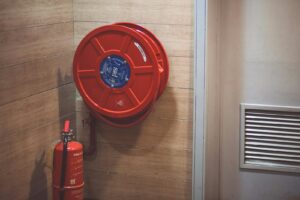How can Industrial Businesses Reduce the Chance of Accidents Occurring in the Workplace?

The average industrial workplace is rife with potential hazards, many of which are critical to productivity. It’s the duty of workers and their employers to create a culture in which these hazards are recognised and guarded against. Just a little bit of vigilance can go a long way toward preventing accidents, and ensuring those that do occur are handled appropriately. Where accidents do occur, personal injury solicitors can step in on behalf of the effected party and seek damages.
Provide Proper Training
If your staff don’t have the knowledge and skills necessary to spot and eliminate hazards, then you can be reasonably sure that accidents will happen. Training shouldn’t just be a one-off event – it should be provided during inductions, and regularly refreshed. Your training should also be subject to review, to ensure that it’s effective.
Ensure safety requirements are followed
A risk assessment is the first and arguably most important step when it comes to safety. Identify the risks and implement procedures to mitigate them. Conduct frequent spot-checks and tests to ensure they are being adhered to. Make sure that your team feel able to speak up during team meetings, to apprise you of any potential sticking-points.
Mark walkways and roadways clearly
The spaces where your employees are going to walk should be kept clear and free from clutter. They should also be clearly demarked, to eliminate the chance of a worker unwittingly wandering through a dangerous area. Roadways should also be demarked, to protect workers and equipment. Consider blind spots near corners when considering where your walkways and roadways will go. Workers who wilfully ignore markings of this kind should be disciplined.
Maintain any equipment used
Your equipment is only safe and effective when it’s in good working order. This goes especially for structures like scaffolding, but it also applies to smaller tools, too. Problems with tools should be reported as soon as they’re discovered – and a procedure should be put in place to ensure that this happens. Frequent inspections should be scheduled, and a specific employee should be tasked with conducting them.
Provide appropriate protective equipment
Personal protective equipment can spell the difference between life and death. The most obvious example of this is the hard-hat, which will absorb the impact of a falling object – but facemasks and safety goggles also have a critical role to play, particularly in environments where asbestos is a danger. Once risks have been identified, PPE should be mandated, and workers who fail to wear it should face sanction.





